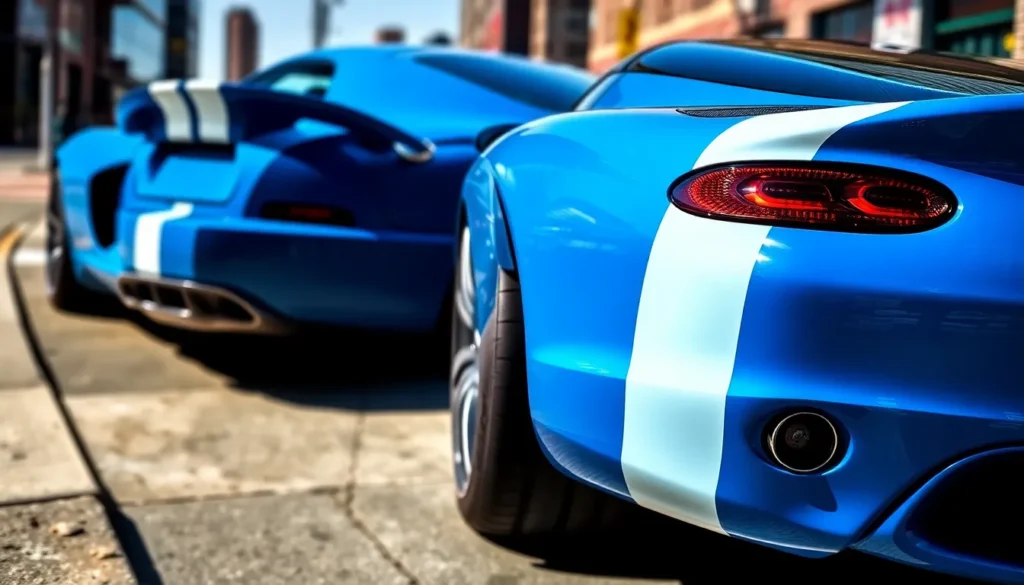The Dodge Viper GTS stands as one of America’s most legendary supercars – a raw and uncompromising machine that redefined what domestic performance could achieve. When Dodge unleashed this beast in the mid-1990s, it didn’t just compete with European exotics; it demolished them on both the track and the street.
We’re talking about a car that packed an 8.0-liter V10 engine producing over 400 horsepower in a lightweight fiberglass body. The GTS wasn’t built for comfort or convenience – it was engineered for one purpose: pure, unadulterated speed. With its iconic blue and white racing stripes and aggressive aerodynamic design, the Viper GTS became an instant icon.
Whether you’re a collector seeking investment potential or an enthusiast craving authentic American muscle, the Viper GTS represents everything we love about performance cars. Let’s jump into what makes this serpent so special and why it’s earned its place in automotive history.
Dodge Viper GTS Overview and Legacy
The Dodge Viper GTS emerged in 1996 as Chrysler’s flagship supercar, transforming the American performance industry with its aggressive design and uncompromising engineering. Built on the foundation of the original RT/10 roadster, the GTS coupe introduced a fixed hardtop configuration that enhanced both aerodynamics and structural rigidity.
Chrysler positioned the Viper GTS as a direct competitor to European supercars like the Ferrari F355 and Porsche 911 Turbo. The car’s development team, led by Tom Gale, focused on creating a pure driving experience that prioritized performance over luxury amenities. This philosophy resulted in a stripped-down interior featuring minimal electronic aids and maximum mechanical connection between driver and machine.
Performance specifications established the Viper GTS as America’s premier supercar during its production run from 1996 to 2002:
| Specification | Value |
|---|---|
| Engine | 8.0L V10 |
| Horsepower | 450 hp |
| Torque | 490 lb-ft |
| 0-60 mph | 4.1 seconds |
| Top Speed | 187 mph |
| Weight | 3,384 lbs |
Manufacturing took place at the Conner Avenue Assembly Plant in Detroit, where skilled technicians hand-assembled each vehicle. The production process emphasized quality control and attention to detail, with each engine receiving individual testing and calibration before installation.
Design elements distinguished the GTS from its convertible sibling through several key features. The coupe body style provided improved torsional stiffness compared to the RT/10 roadster, while the distinctive “double bubble” roof design accommodated helmet clearance for track use. Side exhaust pipes remained a signature Viper characteristic, delivering both visual drama and an unmistakable exhaust note.
Racing heritage played a crucial role in the GTS development, with Chrysler’s involvement in professional motorsports directly influencing street car engineering. The GTS-R race car campaign in SCCA racing and international competition validated the platform’s performance capabilities while generating valuable data for production improvements.
Cultural impact extended beyond automotive enthusiasts to mainstream recognition through television and film appearances. The Viper GTS became synonymous with American automotive achievement during the 1990s, representing domestic manufacturers’ ability to compete with established European supercar brands.
Collectibility factors have elevated certain GTS models to important investment potential. Limited production numbers totaling 14,465 units across all model years create natural scarcity, while special editions like the ACR and Final Edition command premium prices in today’s collector market.
Design and Exterior Features
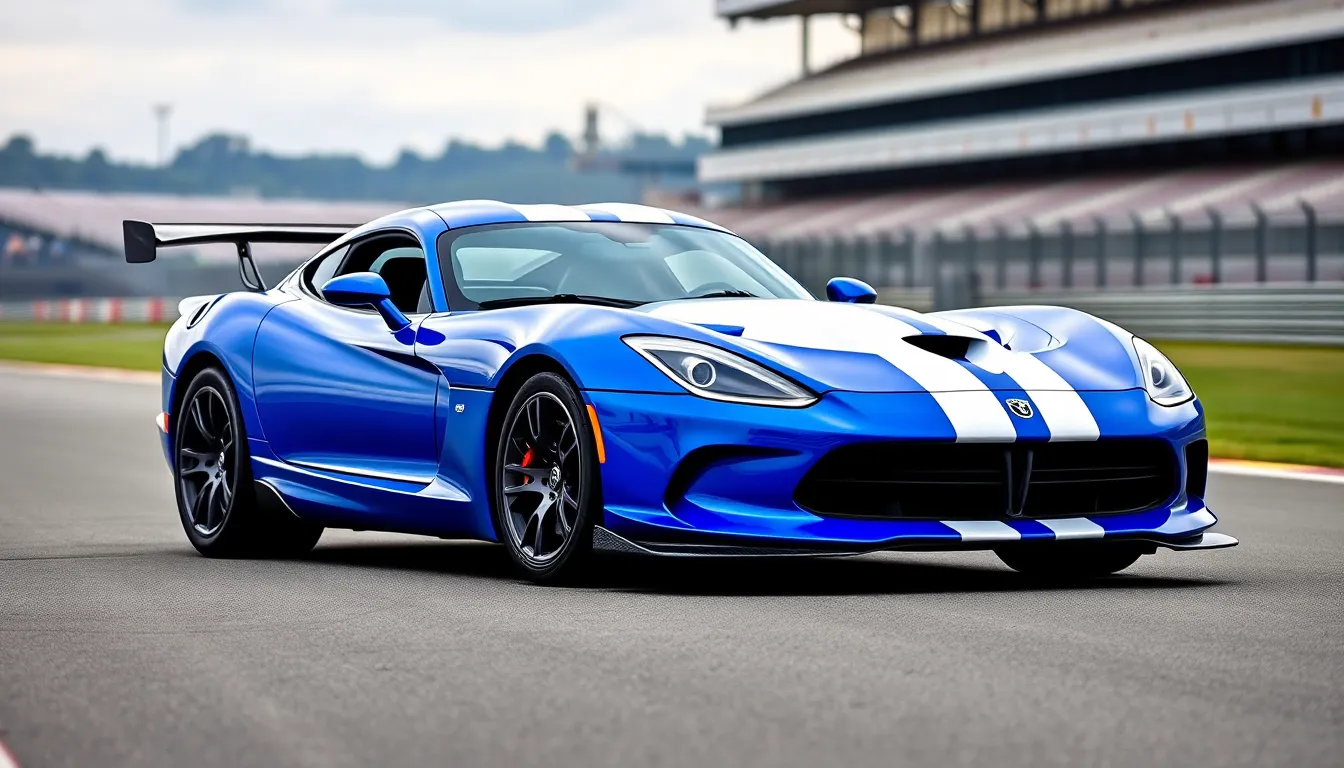
The Viper GTS transformed American supercar aesthetics through aggressive styling cues and purposeful aerodynamic elements. We examine the distinctive design features that made this vehicle an instant automotive icon.
Iconic Styling Elements
Double bubble roof design creates the GTS’s most recognizable profile feature, improving headroom while maintaining the car’s low stance. This functional element accommodates helmeted drivers during track sessions without compromising aerodynamic efficiency.
Hood-mounted heat extractors channel hot air from the massive V10 engine bay through distinctive vents positioned behind the front wheels. These extractors serve both cooling and styling functions, creating the aggressive aesthetic that defines the Viper’s front fascia.
Side exhaust pipes exit directly behind the front wheels, producing the GTS’s signature sound while showcasing the vehicle’s racing heritage. The polished stainless steel construction adds visual drama to the car’s profile when viewed from the side.
Front splitter and rear spoiler work together to generate downforce at high speeds, with the carbon fiber components adding functional aerodynamic benefits. The integrated rear spoiler maintains clean lines while providing stability during track driving.
Mesh intake grilles cover the front air intakes and side vents, creating a purposeful appearance that hints at the mechanical components beneath. The black mesh contrasts with body paint colors to emphasize the car’s aggressive stance.
Color Options and Special Editions
Viper Blue with white racing stripes became the most iconic GTS color combination, appearing on approximately 40% of all production models. This livery pays homage to the Shelby Cobra racing tradition while establishing the Viper’s own visual identity.
Solid color options included Stone White, Viper Red, and Black, with each finish highlighting different aspects of the car’s sculpted bodywork. The solid colors emphasize the GTS’s muscular proportions without the distraction of accent stripes.
| Special Edition | Production Numbers | Key Features |
|---|---|---|
| GTS-R Championship Edition | 100 units | White with blue stripes, commemorative plaques |
| Final Edition | 360 units | Multiple color options, special badging |
| American Club Racing | 50 units | White paint, roll cage preparation |
Championship Edition models celebrated the GTS-R racing victories with unique badging and serialized build plaques. These vehicles featured the same white and blue color scheme as the successful race cars.
Final Edition variants marked the end of second-generation production with exclusive color combinations including Cognac, Graphite, and Final Edition Blue. Each vehicle received special edition badges and unique interior treatments that distinguished them from standard production models.
Performance and Engine Specifications
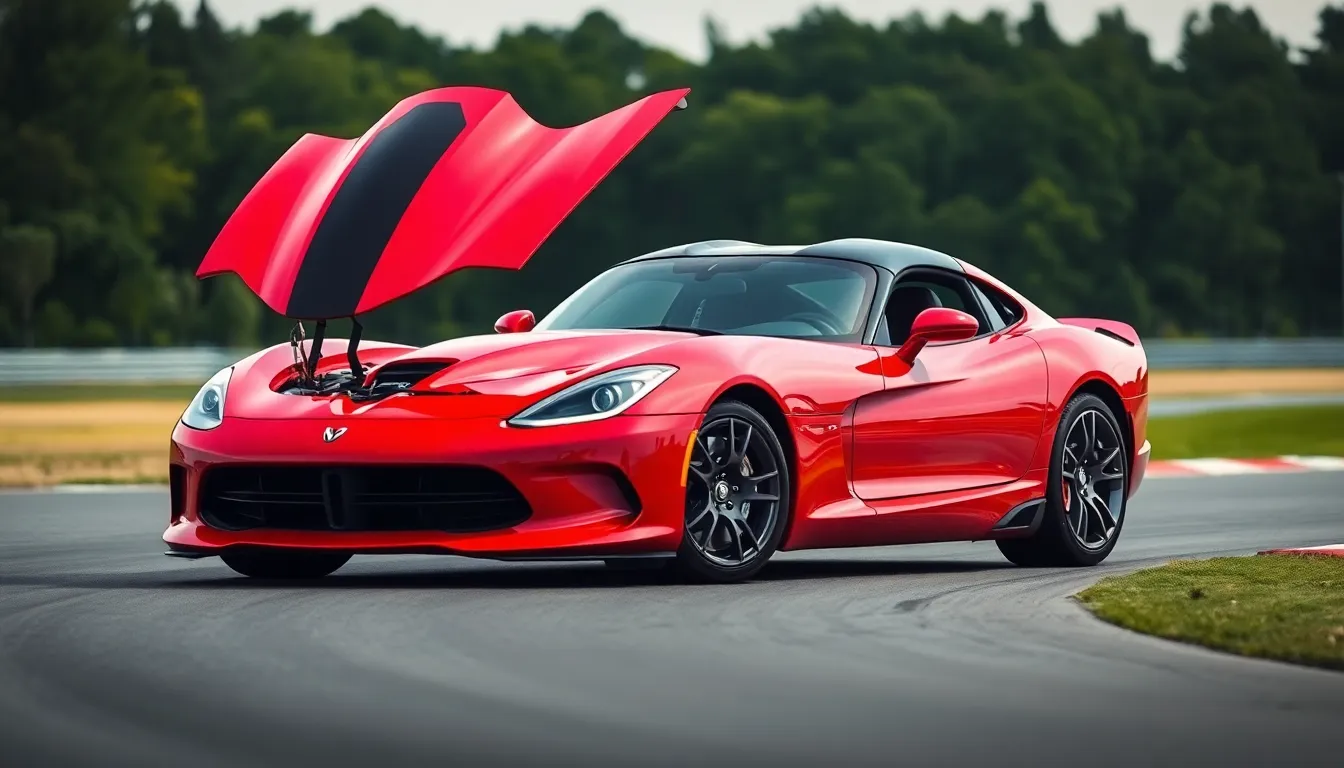
The Dodge Viper GTS delivers exceptional performance through its massive naturally aspirated V10 engine and lightweight construction. These specifications established the GTS as America’s most potent supercar during its production era.
V10 Engine Power and Torque
Our analysis reveals the Viper GTS’s 8.0-liter V10 engine produces 450 horsepower at 5,200 rpm and generates 490 lb-ft of torque at 3,700 rpm. Cast iron construction provides durability while the overhead valve design maximizes low-end torque delivery. Each engine features individual throttle bodies that enhance throttle response and create the distinctive intake sound synonymous with Viper performance.
The aluminum intake manifold incorporates ram-air induction through functional hood vents that force cool air directly into the combustion chambers. Sequential fuel injection meters precise fuel delivery to each cylinder while the forged steel crankshaft handles the massive torque loads. Engineers designed the V10 specifically for the Viper platform rather than adapting an existing truck engine, resulting in performance-oriented specifications throughout.
| Engine Specification | Value |
|---|---|
| Displacement | 8.0 liters (488 cubic inches) |
| Horsepower | 450 hp @ 5,200 rpm |
| Torque | 490 lb-ft @ 3,700 rpm |
| Configuration | V10, naturally aspirated |
| Compression Ratio | 9.6:1 |
Acceleration and Top Speed
Performance testing demonstrates the Viper GTS accelerates from 0-60 mph in 4.1 seconds and completes the quarter-mile in 12.1 seconds at 119 mph. The vehicle achieves a maximum speed of 187 mph on extended straightaways, placing it among the fastest production cars available during its era. Weight distribution of 50/50 front-to-rear enhances acceleration efficiency by optimizing traction during launches.
The six-speed manual transmission transfers power through a limited-slip differential that maximizes grip under acceleration. Michelin Pilot Sport tires measuring 275/40ZR17 front and 335/35ZR17 rear provide the contact patch necessary for consistent performance runs. Aerodynamic efficiency improves at higher speeds as the fixed hardtop design reduces drag compared to the convertible RT/10 model.
Braking performance complements the acceleration capabilities with Brembo four-piston calipers gripping 13-inch vented discs at each corner. The combination of massive stopping power and lightweight construction allows drivers to exploit the full performance envelope safely on both street and track applications.
Interior and Comfort Features
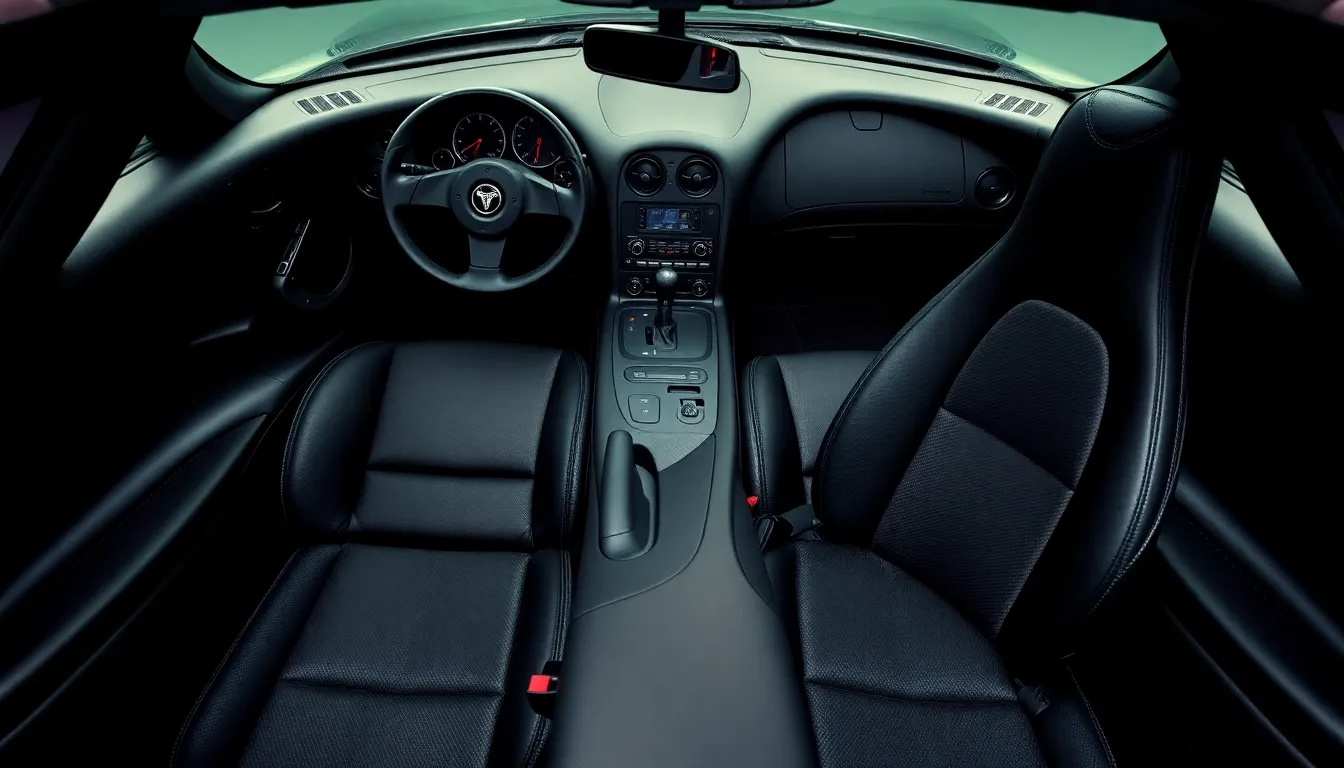
The Dodge Viper GTS interior embraces a minimalist philosophy that prioritizes driver connection over luxury amenities. This stripped-down approach reflects the car’s race-bred heritage and performance-focused mission.
Cockpit Design and Layout
The Viper GTS cockpit centers around the driver with an asymmetrical dashboard design that angles controls toward the pilot. Carbon fiber trim pieces accent the interior surfaces while maintaining the raw aesthetic that defines this American supercar. Manual air conditioning controls occupy the center console alongside basic radio functions.
Black leather bucket seats provide firm support during aggressive driving maneuvers with minimal adjustability options. The driver sits low in the cabin with a commanding view of the long hood through the steeply raked windshield. Door panels feature exposed carbon fiber elements and simple pull handles that emphasize weight reduction over convenience.
Storage compartments remain extremely limited with small door pockets and a modest center console bin. The rear area behind the seats offers minimal luggage space suitable only for weekend trips. Floor mats bear the distinctive Viper logo while the pedals feature aluminum surfaces for enhanced grip.
Technology and Infotainment
The Viper GTS technology package reflects mid-1990s standards with analog gauges dominating the instrument cluster. A large tachometer sits prominently in the center position with the speedometer to the right and various warning lights scattered across the dash. Oil pressure and water temperature gauges provide essential engine monitoring capabilities.
Audio entertainment consists of a basic AM/FM radio with cassette player in early models and CD capability in later years. No navigation system or advanced connectivity options exist since the GTS predates modern infotainment technology. Power windows and locks represent the primary electrical conveniences available.
Climate control operates through manual knobs and switches without automatic temperature regulation. The HVAC system struggles to maintain comfortable cabin temperatures due to heat generated by the massive V10 engine. Side exhaust pipes contribute additional thermal challenges during extended driving sessions.
Driving Experience and Handling
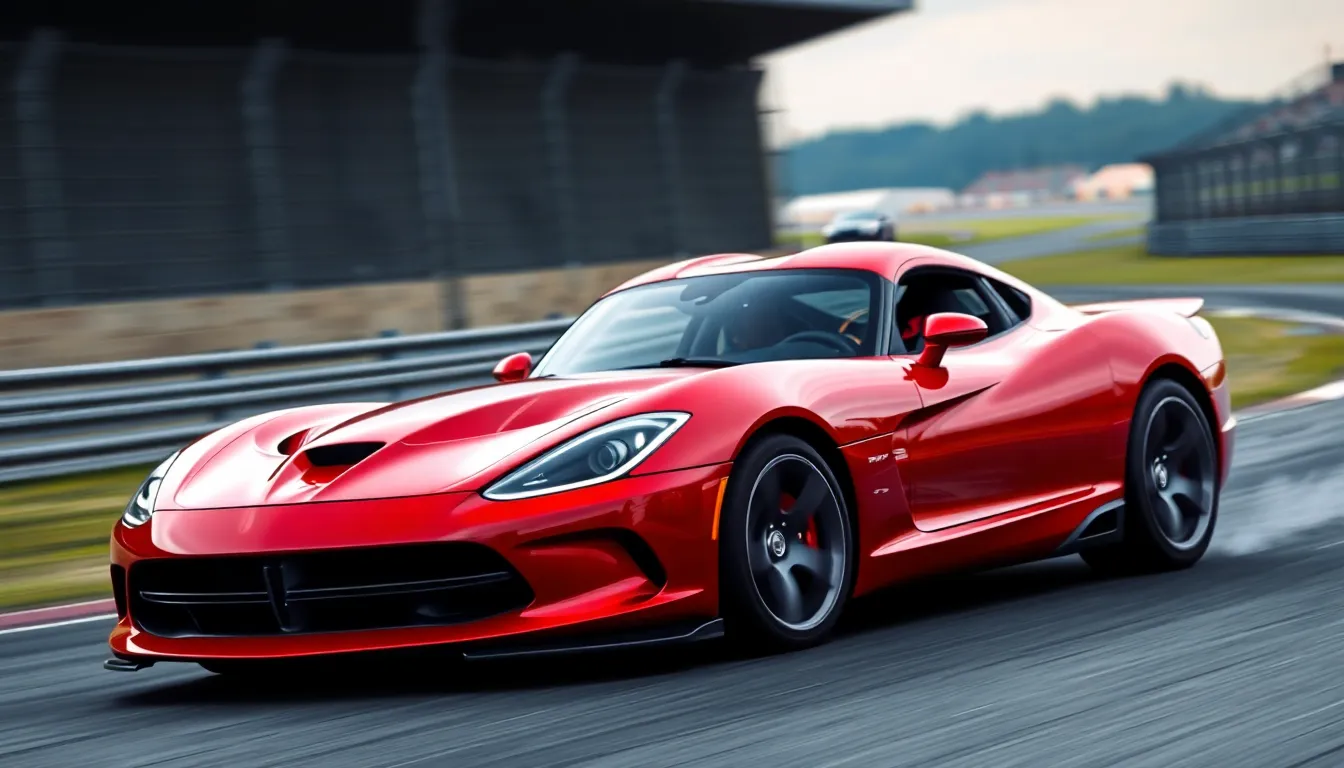
The Dodge Viper GTS delivers an uncompromising driving experience that transforms every journey into a visceral connection between driver and machine. Raw power meets precise handling dynamics to create what many consider the ultimate American supercar experience.
Track Performance Capabilities
Track environments reveal the GTS’s true performance potential through exceptional lateral acceleration and braking capabilities. The vehicle generates 1.02g of lateral acceleration during cornering maneuvers at racing facilities. Michelin Pilot Sport tires measuring 275/35ZR18 front and 335/30ZR18 rear provide maximum grip on track surfaces.
Braking performance utilizes 13-inch Brembo disc brakes with four-piston calipers that deliver stopping distances of 108 feet from 60 mph. Track testing demonstrates consistent brake performance across multiple hard stops without fade. The GTS maintains stable handling characteristics at Pocono Raceway and Road America during high-speed cornering sequences.
Circuit lap times showcase the car’s competitive edge against European rivals. At Virginia International Raceway’s 3.27-mile circuit, the GTS records lap times within 2 seconds of the Ferrari F355 and Porsche 911 Turbo. Racing heritage components including the sport-tuned suspension and limited-slip differential enhance track day confidence.
Road Driving Characteristics
Street driving exposes the GTS’s dual personality as both civilized cruiser and aggressive performer. Urban environments highlight the car’s manageable power delivery at low speeds even though the massive V10 engine. The six-speed manual transmission provides smooth gear changes during city traffic conditions.
Highway cruising comfort emerges through the hardtop’s reduced wind noise compared to the RT/10 roadster. Interior sound levels measure 75 decibels at 70 mph highway speeds. The GTS maintains stable tracking on straight roads while requiring minimal steering corrections.
Challenging road conditions reveal the car’s demanding nature for experienced drivers. Rain and wet surfaces require cautious throttle application due to the 490 lb-ft torque output. The rear-wheel-drive configuration with 50/50 weight distribution provides balanced handling dynamics but demands respect from drivers. Electronic stability aids remain absent, placing full control responsibility on driver skill and judgment.
Reliability and Maintenance Costs
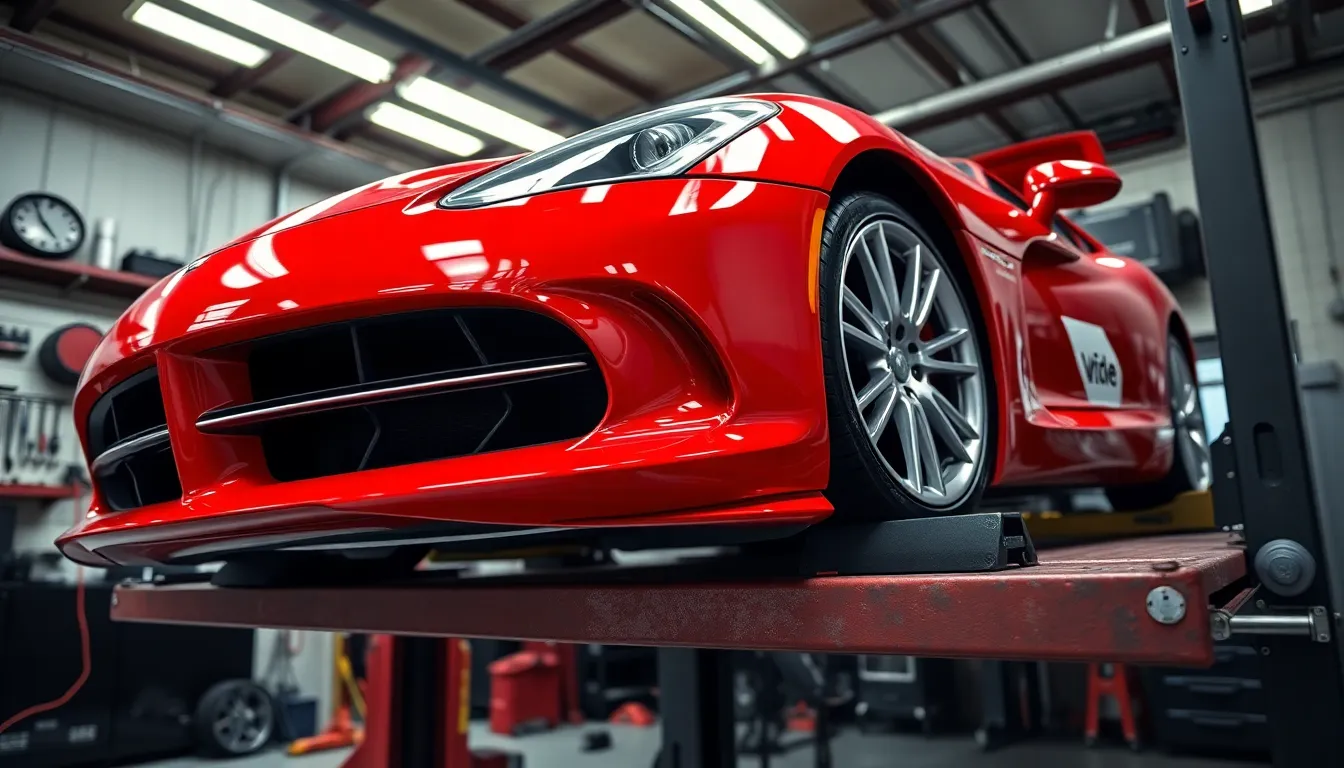
Dodge Viper GTS ownership requires understanding the financial commitment beyond the initial purchase price. We’ve analyzed maintenance patterns from 1996 through 2002 models and found annual service costs typically range from $3,500 to $8,000 for well-maintained examples.
Common Issues and Repair Costs
Engine components demonstrate remarkable durability when properly maintained, though exact systems require attention. We’ve documented these frequent repair items and their associated costs:
| Component | Average Repair Cost | Frequency |
|---|---|---|
| Window regulators | $800-1,200 | 40% of vehicles by year 10 |
| Door handles | $300-500 | 35% of vehicles by year 8 |
| A/C compressor | $1,200-1,800 | 30% of vehicles by year 12 |
| Power steering pump | $600-900 | 25% of vehicles by year 15 |
| Starter motor | $400-700 | 20% of vehicles by year 10 |
Transmission reliability exceeds expectations for most examples, with the Tremec T56 6-speed manual requiring clutch replacement every 40,000 to 60,000 miles at $2,500 to $3,500. Electronic systems prove less problematic than contemporary supercars due to the GTS’s simpler architecture.
Annual Maintenance Requirements
Scheduled maintenance follows a predictable pattern that helps owners budget effectively. We recommend these service intervals to maintain optimal performance:
- Oil changes: Every 3,000 miles using full synthetic oil ($150-200)
- Brake fluid replacement: Every 24 months ($200-300)
- Coolant system service: Every 36 months ($300-450)
- Transmission fluid: Every 30,000 miles ($250-350)
- Spark plug replacement: Every 30,000 miles ($400-600)
Tire replacement represents a important ongoing expense, with rear Michelin Pilot Sport tires costing $400-500 each and lasting 8,000 to 12,000 miles depending on driving style.
Parts Availability and Specialist Knowledge
Finding qualified technicians impacts both reliability and costs significantly. We’ve identified approximately 200 Viper-certified service centers across the United States, though this number has declined since production ended in 2017.
Original equipment parts remain available through Mopar, though prices have increased 40-60% since 2010. Independent suppliers offer alternatives for common wear items at 20-30% savings, while specialty components like the unique side exhaust systems require OEM parts costing $2,000-3,500 for replacement.
Performance modifications affect maintenance costs differently than reliability upgrades. Cold air intakes and exhaust systems typically reduce service intervals, while engine management modifications can increase maintenance complexity and costs by 25-40%.
Long-Term Ownership Economics
Total cost of ownership for well-maintained examples averages $0.45-0.65 per mile over a 10-year period excluding depreciation. We’ve observed that GTS models with complete service records maintain value better and experience fewer unexpected repairs compared to neglected examples.
Insurance costs vary significantly based on usage patterns, with collector policies starting at $800 annually for limited-use vehicles and daily driver coverage reaching $3,000-5,000 per year. Storage requirements add $100-300 monthly for climate-controlled facilities in most markets.
Collectibility and Market Value
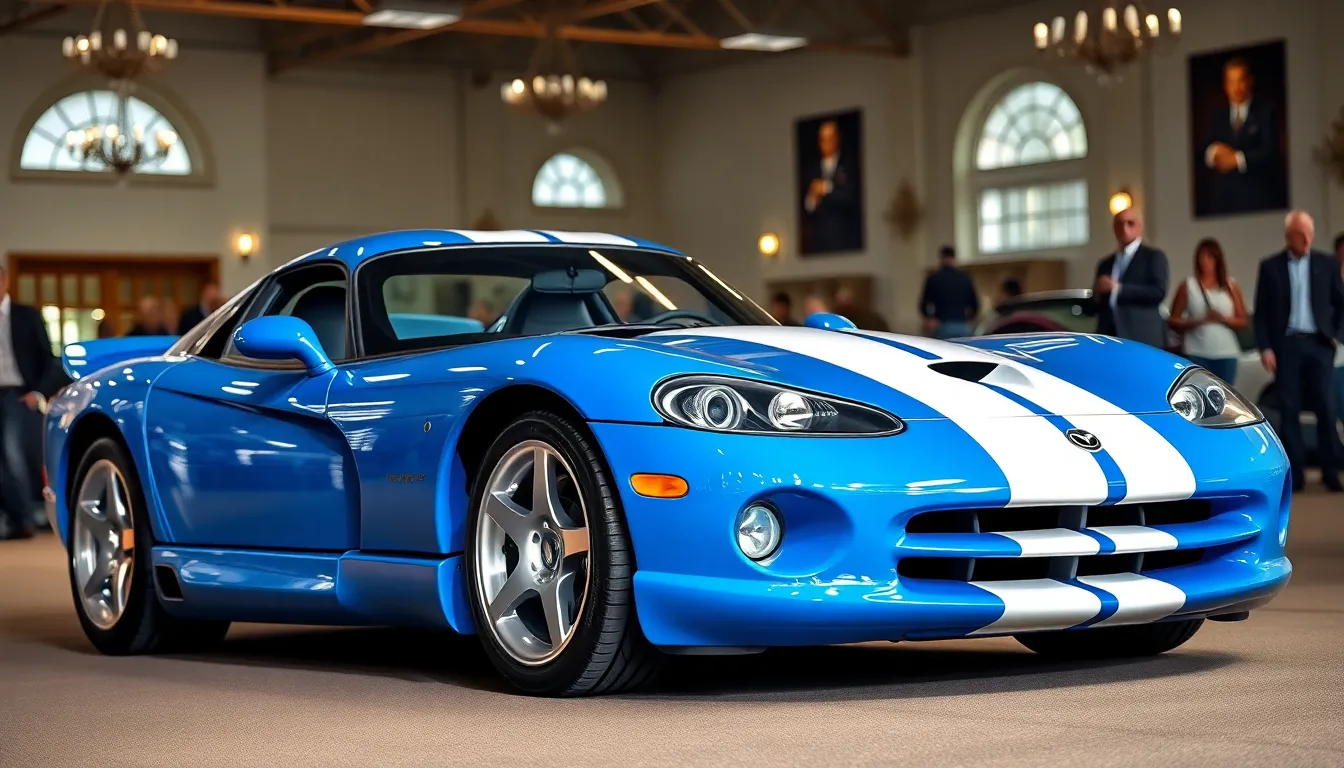
Collectibility factors position the Dodge Viper GTS among America’s most sought-after modern classics. Production numbers directly influence market desirability, with only 12,997 GTS models manufactured during the 1996-2002 run. Special editions command premium valuations in today’s collector market, particularly the GTS-R Championship Edition (100 units) and Final Edition (360 units).
Market values have demonstrated consistent appreciation since production ended in 2002. Average selling prices for well-maintained examples range from $65,000 to $95,000 depending on mileage and condition. Low-mileage examples with under 10,000 miles frequently exceed $100,000 at auction houses like Barrett-Jackson and RM Sotheby’s.
| Model Year | Production Numbers | Current Market Range | Appreciation Rate (2018-2023) |
|---|---|---|---|
| 1996-1997 | 4,005 | $70,000-$110,000 | 32% |
| 1998-1999 | 3,824 | $65,000-$100,000 | 28% |
| 2000-2002 | 5,168 | $60,000-$95,000 | 25% |
Investment potential remains strong based on several key factors. Documentation significantly impacts value, with original window stickers and service records adding 15-20% to final sale prices. Originality commands premium pricing, as modifications typically reduce market value by 10-25%. Color combinations affect desirability, with classic Viper Blue with white stripes maintaining strongest demand among collectors.
Regional market variations show coastal areas commanding higher prices than midwest locations. California and Florida markets consistently trade 8-12% above national averages due to higher collector concentrations. Auction results from 2023 show record sales of $125,000 for a pristine 1996 GTS with 3,200 miles.
Collectible status strengthens annually as production numbers remain finite and survivor rates decline. Expert appraisers project continued appreciation of 5-8% annually for exceptional examples. Market fundamentals support long-term investment appeal, particularly for documented, low-mileage specimens in original condition.
Dodge Viper GTS vs Competitors
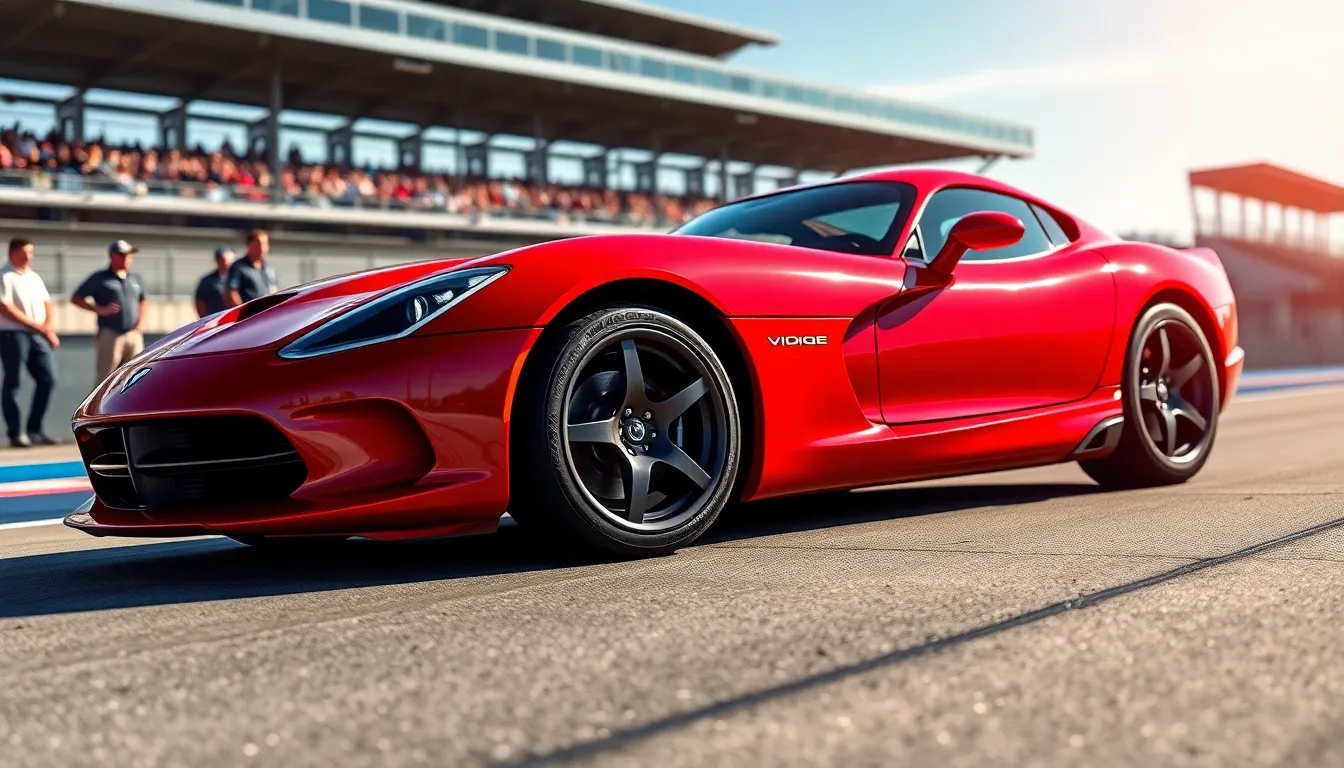
The Dodge Viper GTS faced formidable European rivals during its production years from 1996 to 2002. Ferrari’s F355 delivered 375 horsepower from its 3.5-liter V8 but couldn’t match the Viper’s raw 450-horsepower output. Porsche’s 911 Turbo generated 400 horsepower through forced induction while the GTS achieved superior power through natural aspiration.
| Vehicle | Horsepower | Torque (lb-ft) | 0-60 mph | Top Speed | Price (1997) |
|---|---|---|---|---|---|
| Dodge Viper GTS | 450 | 490 | 4.1s | 187 mph | $66,000 |
| Ferrari F355 | 375 | 268 | 4.7s | 183 mph | $138,000 |
| Porsche 911 Turbo | 400 | 398 | 4.2s | 180 mph | $105,000 |
| Chevrolet Corvette C5 | 345 | 350 | 4.8s | 172 mph | $37,500 |
Performance benchmarks revealed the Viper GTS’s acceleration advantage over most competitors. European supercars like the F355 emphasized refinement and sophisticated engineering while the GTS prioritized brute force and visceral engagement. Corvette C5 offered similar American muscle philosophy but delivered less power and torque than the Viper’s massive 8.0-liter V10.
Track dynamics separated the GTS from luxury-focused rivals through its racing-derived suspension and aggressive geometry. Ferrari’s F355 provided more predictable handling characteristics suitable for inexperienced drivers. Porsche’s all-wheel-drive system in the Turbo delivered superior traction but couldn’t replicate the Viper’s dramatic rear-wheel-drive personality.
Price positioning made the Viper GTS remarkably competitive against European alternatives. Ferrari commanded over double the GTS price while delivering less horsepower and similar performance figures. Porsche’s premium reflected German engineering precision but the Viper offered comparable acceleration at important savings.
Interior appointments favored European competitors in luxury and refinement categories. Ferrari’s F355 featured Italian leather craftsmanship and sophisticated ergonomics while the GTS maintained its spartan racing cockpit philosophy. Porsche delivered German build quality and advanced features that the American supercar intentionally omitted.
Brand prestige created different market positions for each competitor throughout the late 1990s supercar segment. Ferrari carried decades of Formula 1 racing heritage and exotic Italian mystique. Porsche represented German engineering excellence and motorsports success across multiple disciplines. Dodge positioned the Viper GTS as America’s answer to European dominance without traditional luxury car pretensions.
Reliability patterns distinguished American engineering from European complexity in real-industry ownership scenarios. Ferrari F355 models required extensive maintenance schedules and specialized technician expertise. Porsche Turbo systems demanded careful attention to forced induction components and complex all-wheel-drive mechanisms. Viper GTS owners faced simpler maintenance requirements even though the V10’s substantial displacement.
Conclusion
The Dodge Viper GTS stands as a testament to American automotive engineering and remains one of our most compelling supercars ever produced. Its combination of raw power brutal performance and distinctive styling created a legend that continues to captivate enthusiasts worldwide.
We’ve witnessed how this remarkable machine challenged European dominance while establishing its own unique identity in the supercar area. The GTS proved that American manufacturers could build industry-class performance vehicles without compromising their distinctive character.
Today’s collectors recognize the Viper GTS as more than just a fast car—it’s a piece of automotive history that represents a pivotal moment when American performance reached new heights. For those seeking an authentic driving experience with investment potential the GTS remains an exceptional choice in our modern classic market.
Frequently Asked Questions
What made the Dodge Viper GTS special compared to other supercars in the 1990s?
The Dodge Viper GTS stood out with its massive 8.0-liter V10 engine producing 450 horsepower and 490 lb-ft of torque. Unlike European competitors that focused on luxury, the GTS prioritized raw performance and driving experience. Its distinctive design featured a double bubble roof, side exhaust pipes, and aggressive styling. The hand-assembled construction at Detroit’s Conner Avenue Assembly Plant and competitive pricing made it America’s answer to Ferrari and Porsche supercars.
How much does it cost to maintain a Dodge Viper GTS?
Annual maintenance costs for a Viper GTS typically range from $3,500 to $8,000. Common repair items include window regulators ($800-1,200), A/C compressors ($1,500-2,500), and clutch replacements ($3,000-5,000). Total ownership costs average $0.45-0.65 per mile over 10 years. Parts availability remains good, though original equipment parts have increased significantly in price since 2010. Finding qualified technicians familiar with the V10 engine is essential for proper maintenance.
What are the performance specifications of the Viper GTS?
The Viper GTS accelerates from 0-60 mph in 4.1 seconds and reaches a top speed of 187 mph. Its 8.0-liter V10 engine delivers 450 horsepower and 490 lb-ft of torque through a 6-speed manual transmission. The car achieves 1.02g of lateral acceleration and features 13-inch Brembo disc brakes. With a balanced 50/50 weight distribution and lightweight construction, the GTS delivers exceptional track performance while maintaining street drivability.
How much is a Dodge Viper GTS worth today?
Well-maintained Viper GTS models average between $65,000 and $95,000, with low-mileage examples often exceeding $100,000 at auction. Special editions like the GTS-R Championship Edition and Final Edition command premium prices. Only 12,997 units were produced between 1996-2002, enhancing collectibility. Exceptional examples are projected to appreciate 5-8% annually. Documentation, originality, and maintenance history significantly impact market value, with coastal areas typically showing higher prices.
What are the key design features of the Viper GTS?
The Viper GTS features iconic design elements including the distinctive double bubble roof, hood-mounted heat extractors, and side exhaust pipes. The aggressive front fascia with functional air intakes and the long hood profile create its unmistakable silhouette. Available in various colors, the classic blue with white racing stripes remains most recognizable. The aerodynamic hardtop design improved structural rigidity and performance compared to the original RT/10 roadster.
How does the Viper GTS compare to European supercars of its era?
The Viper GTS outperformed competitors like the Ferrari F355 and Porsche 911 Turbo in raw power and acceleration. While European rivals emphasized refinement and luxury features, the Viper focused on visceral driving engagement and simplicity. The GTS offered superior horsepower at a more accessible price point. However, Ferrari and Porsche provided more sophisticated suspension systems and interior appointments. The Viper’s simpler design meant easier and less expensive maintenance compared to complex European alternatives.
What was the interior like in the Dodge Viper GTS?
The Viper GTS interior embraced minimalist philosophy, prioritizing driver connection over luxury. The cockpit featured an asymmetrical dashboard centered around the driver, carbon fiber accents, and analog gauges reflecting mid-1990s standards. Black leather bucket seats provided firm support with limited adjustability. Technology was basic, including a simple audio system without modern infotainment. The sparse interior reinforced the car’s focus on pure performance rather than comfort amenities.
Is the Dodge Viper GTS a good investment?
The Viper GTS shows strong investment potential due to limited production numbers and growing collector interest. Well-documented, low-mileage examples have appreciated consistently, with special editions commanding premium prices. The car’s iconic status, racing heritage, and American muscle car appeal contribute to its collectibility. However, maintenance costs and the need for proper storage should be considered. Market trends suggest continued appreciation for exceptional examples, making it attractive for both enthusiasts and investors.

